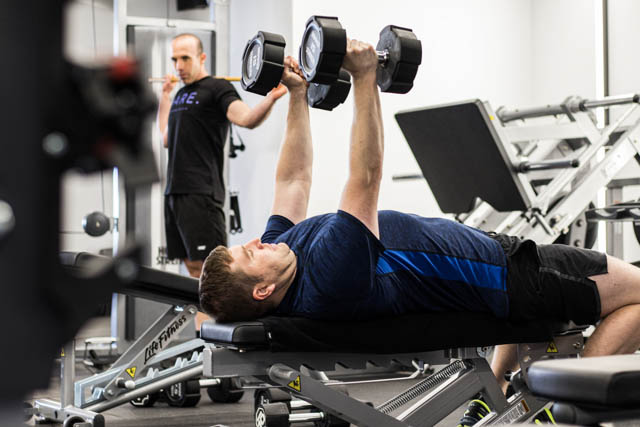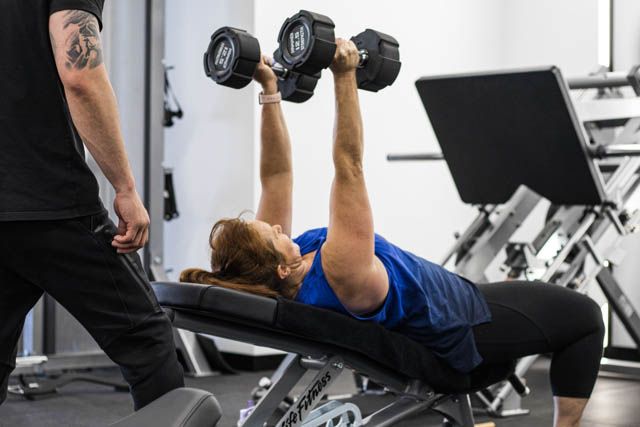5 REASONS TO TAKE UP STRENGTH TRAINING IN 2025
By David OttobreDare MD
In a world where fitness trends come and go, one thing remains constant – the transformative power of strength training.
As we enter the New Year, you might be looking for a new kind of gym routine that can help you shed kgs and look and feel your best.
If that’s you then here’s 5 reasons to take up strength training in 2025.

- A more efficient metabolism
Strength training plays a vital role in enhancing metabolic health.
As you build muscle mass, your resting metabolic rate increases, which means you burn more calories even while at rest. The liver, brain, and heart are the most metabolically active organs in the body, followed by your other organs.
Then, it’s muscle, which is the most metabolically active tissue. It consumes energy even at rest.
While you can’t grow new organs to start boosting your metabolism, you can grow muscle which means your body has to work harder to keep you alive.
This metabolic boost allows you to consume more calories, which can contribute to better weight management and overall health.

- Improved insulin sensitivity
Strength training has been shown to improve insulin sensitivity, which can help reduce the risk of type 2 diabetes.
Studies indicate that the relationship between strength training and insulin resistance is due to the body mass effect, which suggests that the muscle hypertrophy gained from strength training increases insulin sensitivity.
Essentially, it is thought that the more muscle you have, the better your body can break down glucose, which can reduce your risk of developing diabetes and other health complications.
- Huge impact on bone density
Did you know that broken bones can be a real problem as you age.
In Australia, the rate of fractures is almost seven times higher in women over 60 than in women under 55. For men, the rate is 50% higher.
Your risk of broken bones increases significantly as you age and the kinds of breaks also get worse too. We’re not talking about a broken finger or toe here, the breaks that people over 65 tend to encounter are debilitating. Most common breaks include the hip, spine, distal forearm, and humerus.
These can put you out for months and studies also show that broken bones are highly linked to death in older people. Shockingly, 33% of adults over 50 die within a year of breaking their hip.
So why does this happen?
Bone density.
As we age, bones naturally lose density, leading to conditions like osteoporosis.
By strengthening our bones in younger years, we can change the course of our lives as we age. Not to be dramatic, but we think this is by far the coolest thing about strength training.
Strength training stimulates bone growth and helps maintain bone density, making it a critical component of health for older adults. Studies have demonstrated that individuals who engage in regular resistance training have stronger bones and a lower risk of fractures.
This protective effect is particularly important for women, who are at a higher risk of osteoporosis postmenopausal. In essence, embracing strength training can significantly contribute to long-term skeletal health and lower risk of death.

- Strength training helps you lose weight
When it comes to weight loss, strength training is an incredibly effective tool.
While cardio workouts like running and cycling are commonly associated with burning calories, strength training preserves lean muscle mass during weight loss.
Many traditional weight loss methods, particularly those focused solely on cardio, can lead to muscle loss as well as fat loss. This is counterproductive, as maintaining muscle is essential for a toned and athletic physique.
By incorporating strength training into your weight loss strategy, you can ensure that the weight you lose is primarily fat, which leads to a more toned and defined figure. This muscle preservation is crucial not only for aesthetics but also for maintaining strength and function as you age.
- Improved mental health and cognitive function
Strength training is great for both body and brain!
Engaging in strength training has been shown to significantly improve mood and reduce symptoms of anxiety and depression. The act of lifting weights triggers the release of endorphins, the body’s natural feel-good hormones, which can elevate mood and provide a sense of wellbeing. Many people report feeling empowered and more confident after completing a strength training session, creating a positive feedback loop that encourages consistent participation.
Beyond mood enhancement, strength training can also lead to improved cognitive function. Research indicates that regular physical activity, including strength training, is associated with better memory, attention, and overall brain health. The increase in blood flow and oxygenation to the brain during exercise is thought to contribute to these cognitive benefits. In the context of aging, strength training has been shown to help mitigate cognitive decline, making it an essential component of a healthy lifestyle for individuals of all ages.
Strength Training in 2025: Predictions
As we look toward 2025 and beyond, the landscape of strength training is poised to evolve significantly.
It’s likely that wearable technology, like fitness trackers and smartwatches, will continue to provide real-time feedback on performance metrics and people will begin sharing more of their fitness journey online. Health and wellness is becoming somewhat of a status symbol, with a fit body being hailed as something money can’t buy. So it’s likely that we will see everyday people sharing more of their fitness stories as the year goes on.
We predict there will also be a growing awareness of the health benefits of strength training and how it can help us age. Older Australians are becoming more active, and we’re likely going to see a rise in over 60s taking up weight lifting to keep them mobile.
Lastly, we’re expecting to see further increases in people getting help from personal trainers and coaches to get results. With a focus on personalisation, we expect more people to move away from group training and get the 1-1 support they really need.
This shift will ensure that individuals of all fitness levels can engage in meaningful strength training experiences. Adaptive strength training programs designed for people with disabilities or specific health concerns will gain prominence, and strength training for specific goals will become more celebrated.
As we move forward, the future of strength training promises to be innovative, accessible, and holistic, inviting more people to discover its transformative power.
Want to learn more?
Contact us now to get started.
